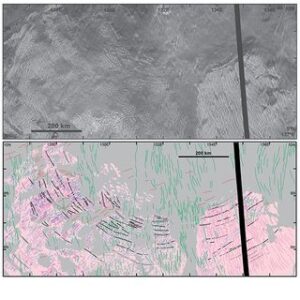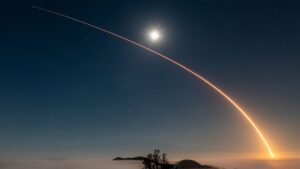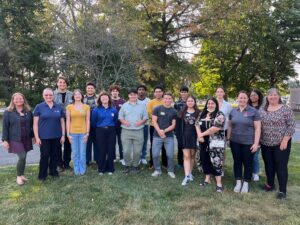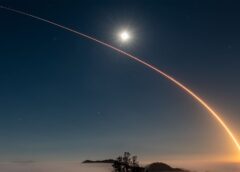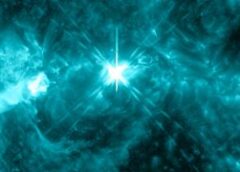“There’s this thing called the overview effect: Space has this effect on people that you could probably call almost spiritual. Everyone returns from spaceflight changed in one way or another. … They see the Earth from space, and that’s how they continue to see it after flight. “… The more people travel to space and have the experience of seeing the Earth, the less chance of wars and conflict and separation we have. Life becomes more hopeful. “I read [‘The Last Man on the Moon’] by Gene Cernan, and he…
Read MoreContributions of the DC-8 to Earth System Science at NASA: A Workshop
Call for Papers Date: August 13–14, 2024Location: Washington, D.C. Jointly organized by the NASA History Office and the Earth Science Division, this workshop seeks to document the important contributions of airborne campaigns implemented on NASA’s DC-8 Airborne Science Laboratory. The workshop will be a combination of keynote talks, panel discussions, and roundtables. The intention is to publish an anthology of selected papers of key presentations. NASA’s DC-8 aircraft recently completed nearly four decades of service to NASA with its retirement in early 2024 following the completion of the ASIA-AQ campaign. …
Read MoreAstronaut Kathryn Thornton Works on Hubble Space Telescope
Astronaut Kathryn C. Thornton works with equipment associated with servicing chores on the Hubble Space Telescope during the fourth spacewalk on the eleven-day mission.
Read MoreNASA Sensor Produces First Global Maps of Surface Minerals in Arid Regions
NASA’s EMIT produced its first global maps of hematite, goethite, and kaolinite in Earth’s dry regions using data from the year ending November 2023. The mission collected billions of measurements of the three minerals and seven others that may affect climate when lofted into the air as dust storms. NASA/JPL-Caltech EMIT delivers first-of-a-kind maps of minerals in Earth’s dust-source areas, enabling scientists to model the fine particles’ role in climate change and more. NASA’s EMIT mission has created the first comprehensive maps of the world’s mineral dust-source regions, providing precise…
Read MoreNASA’s Webb Stuns With New High-Definition Look at Exploded Star
6 Min Read NASA’s Webb Stuns With New High-Definition Look at Exploded Star NASA’s James Webb Space Telescope’s new view of Cassiopeia A (Cas A) Credits: NASA, ESA, CSA, STScI, D. Milisavljevic (Purdue University), T. Temim (Princeton University), I. De Looze (University of Gent) Mysterious features hide in near-infrared light Like a shiny, round ornament ready to be placed in the perfect spot on a holiday tree, supernova remnant Cassiopeia A (Cas A) gleams in a new image from NASA’s James Webb Space Telescope. As part of the 2023 Holidays at…
Read MoreLife might have been possible just seconds after the Big Bang
Life has found a home on Earth for around 4 billion years. That’s a significant fraction of the universe’s 13.77 billion-year history. Presumably, if life arose here, it could have appeared anywhere. And for sufficiently broad definitions of life, it might even be possible for life to have appeared mere seconds after the Big Bang. To explore the origins of life, first we have to define it. There are over 200 published definitions of the term, which shows just how difficult this concept is to grapple with. For example, are…
Read MoreDebris from a near-Earth comet could create new meteor shower this week
Earth may experience an entirely new meteor shower this December when our planet enters a stream of the debris left around the sun by a near-Earth comet. These meteors will appear to stream from the direction of the star Lambda-Sculptoris, meaning a potential name for this meteor shower is the “Lambda-Sculptorids.” The progenitor of the potential new meteor shower is Comet 46P/Wirtanen, which was discovered in 1948 and orbits the sun every 5.4 years, much more rapidly than other comets, such as Halley’s Comet — which takes around 75 years…
Read MoreWatch ISS astronaut speak with Nobel Prize winners on Dec. 11
Some of this year’s Nobel Prize winners will make a call to space on Monday (Dec. 11), and you can watch online for free. Two European Space Agency (ESA) astronauts — one of them here on Earth and the other aboard the International Space Station (ISS) — will speak with recent Nobel laureates during the event. You can watch live here at Space.com, via ESA Web Two, at 9:10 a.m. EST (1410 GMT) on Monday. The conversation will include ISS Expedition 70 commander Andreas Mogensen, astronaut Marcus Wandt (who is…
Read MoreThis Week In Space podcast: Episode 90 — The Wizard of Griffith Observatory
On Episode 90 of This Week In Space, Tariq and Rod discuss archaeoastronomy with the amazing Dr. Ed Krupp. Most of us have experienced a planetarium at one time or another, but unless you’ve been to the Griffith Observatory in Los Angeles, you’ve missed out. Besides a brand-spanking-new planetarium theater chock-a-block with special effects and computerized systems, the Observatory’s Halls of Science are a treat not to be missed. Add to that the stunning views of Los Angeles and the facility’s director, Dr. Ed Krupp — one of the best…
Read MoreJapan may delay its Mars moon sampling mission MMX due to rocket problems
Japan’s ambitious mission to explore the two mini moons of Mars could be facing a lengthy delay. The Japan Aerospace Exploration Agency’s (JAXA) Martian Moons eXploration (MMX) is scheduled to launch in September 2024, taking advantage of a once-every-26-months launch window to the Red Planet. Arriving in Mars orbit in August 2025, coinciding with the World Expo in Osaka, MMX would attempt landings on Phobos to collect a minimum 0.35 oz (10 grams) of samples. It would then make flybys of the smaller moon Deimos before a module containing the…
Read More